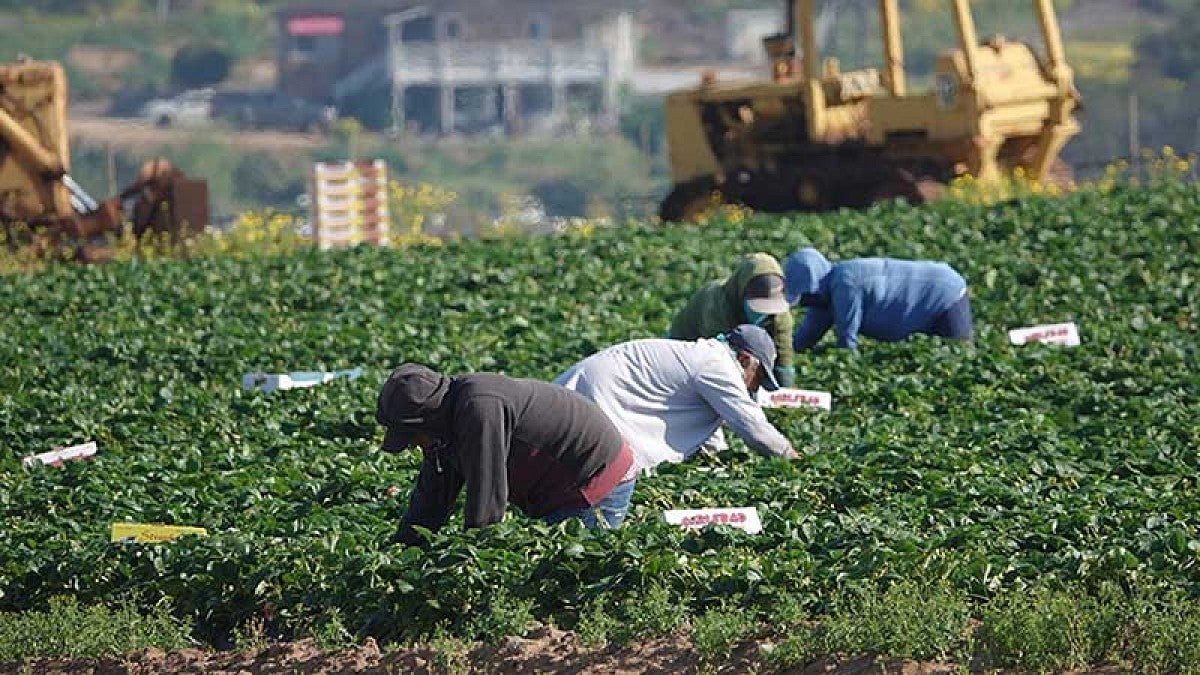A new study from the UO and other institutions around the state shows Oregon farmworkers are dealing with persistently hazardous conditions as a result of both the COVID-19 pandemic and the recent wildfires.
The preliminary results of the study suggest farmworkers face many heightened challenges during the pandemic that have made it difficult to adhere to proper safety procedures and protect themselves from COVID-19. Some of the challenges include disruptions to physical distancing practices, unreliable access to personal protective equipment and COVID-19 testing, and lack of information about support services.
The data were collected through the Oregon COVID-19 Farmworkers Study, which involved surveys and interviews with more than 200 farmworkers from across the state. The study was a collaboration between 11 organizations and research institutions, including the UO.
“The COVID-19 global pandemic, exacerbated by unprecedented wildfires in Oregon, has demonstrated that farmworkers deemed ‘essential’ are on the climate crisis' front lines, worsening already hazardous working conditions to maintain food on our tables,” the group said in a press release this week. “Oregon's farmworker population as a group, of which a significant subsection are Latinx and indigenous to Mexico and Guatemala, have experienced disproportionately higher rates of COVID-19 infection than people from other ethnic backgrounds and work industries.”
Agricultural work sites and food processing plants have been the source of multiple COVID-19 outbreaks in Oregon. The pandemic appears to be disproportionately affecting farmworkers, with more than a third of farmworkers surveyed reporting infected coworkers and 20 percent reporting cases in their household.
But workers from those industries report they aren’t always able to access the equipment and conditions they need to help prevent spread of the virus. When proper protocols are available through their workplaces they willingly follow the practices that help minimize risk of infection, but that isn’t always an option.
The study points to examples like the 22 percent of respondents who reported unsafe bathrooms or a lack of water for handwashing, 20 percent who don’t have access to employer-provided masks, and 39 percent who cannot always practice physical distancing due to work demands.
Many reports of testing complications also arose in the survey. Workers relayed stories about getting sent home from work after taking the COVID-19 test as a precaution, despite not getting a positive test result or displaying symptoms, which discouraged other workers from wanting to get tested as they feared a loss of work.
The fear of lost income was a major theme in survey responses. Many farmworkers have continued to work through hazardous conditions because they can’t afford to miss a paycheck. More than half of participants were unaware of benefits like paid sick leave or relief funds available to help them through loss of employment or income.
The issue is perpetuated by a language barrier that exists for Indigenous language speakers, who face an additional accessibility gap to the information available to them. Oregon farmworkers speak at least 22 Indigenous languages, and most of them are unable to obtain materials about the pandemic in their native language.
If workers did fear exposure to the virus or tested positive for COVID-19, many reported they were unable to access a safe place to self-isolate or quarantine, as farmworkers often share housing with other families or several other individuals.
The recent wildfires across Oregon exacerbated the issue as some workers lost their homes and living quarters grew even tighter; reports said as many as 19 people were jammed into one house and 11 in one hotel room. The fires also exposed many farmworkers to hazardous smoke, as some had to continue working through the thick of the fires. Others were stuck with poorly insulated windows or were living outside when smoke blanketed the state.
The UO’s Lynn Stephen, a professor and Philip H. Knight Chair in anthropology and Distinguished Professor of Arts and Sciences, helped lead the study and focused her role on farmworkers' mental health, which she said is challenged by the harsh working conditions and additional economic pressures. Sixty-eight percent of farmworkers report a major loss of income or work during the pandemic, which has led to additional financial strain during the last six months.
“Farmworkers are also whole people with whole lives, who are taking care of children, parents and extended families,” Stephen said.
She said farmworkers are feeling the emotional stress and financial burden of unaffordable child care as schools have shifted to remote learning. Forty percent of workers who send money to family members in their home countries have had to stop because they are behind on rent or other expenses.
“Sadly, 91 percent have no access to mental health services,” Stephen said. “All of this born on the backs of people who are putting food on our tables.”
The group that collaborated on the survey has also developed policy recommendations for legislative changes. They hope those lead to measures that will help farmworkers access more help and safely navigate the challenges of the pandemic and wildfires.
—By Emily Halnon, University Communications


